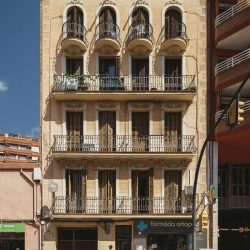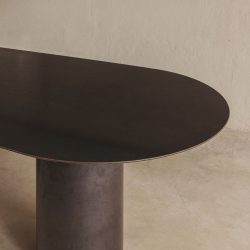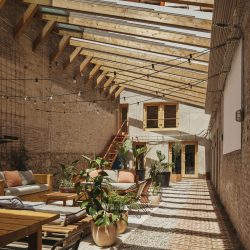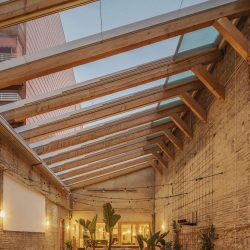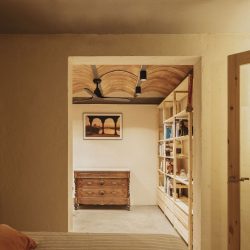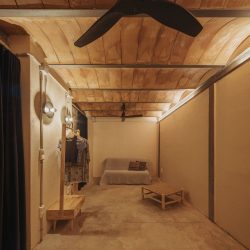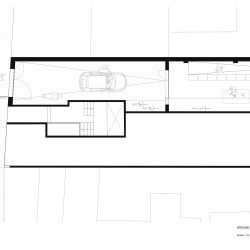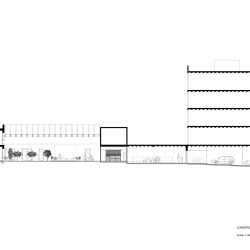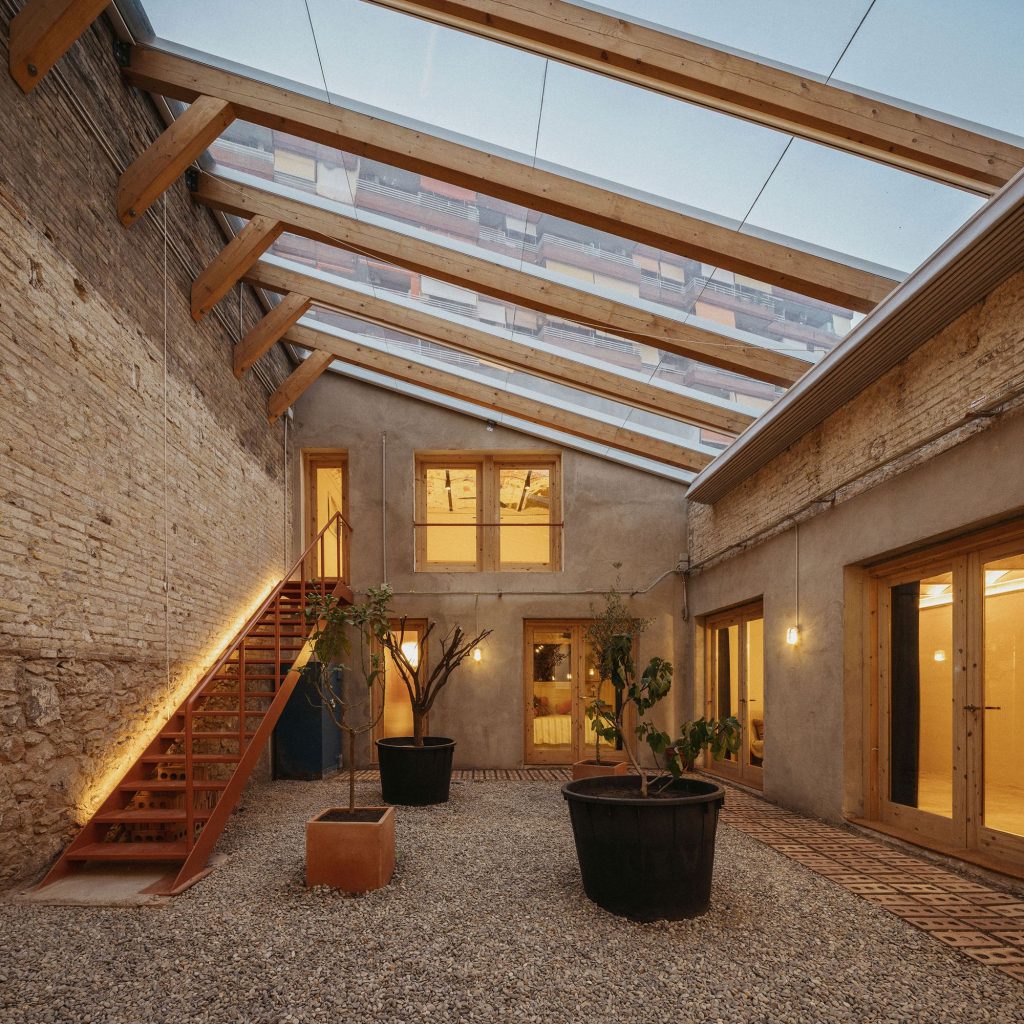
MARBÄ arquitectura . photos: © Alejandro Gómez Vives
Oasis is the name of an architectural project, but it comes from a research process to create a green and sustainable space with the highest quality of life in one of the densest cities in Spain and Europe.
This project is located on the ground floor of a residential block. At the beginning it was a parish, later a printing press and finally a bazaar. The first time I visited it, the distribution and products from the bazaar were still there. The challenge was immense.
The objective of the project was to transform this ground floor into a mixed space where they could live and work in an office. Another plus was obtaining a high energy efficiency building thinking about passive strategies, local materials and a bioclimatic design (always in accordance with the site and the climate of the place). The main challenge was finding the flexibility to make a house covering the needs of a young couple but considering the possibilities of adaption trough time.
The result is a green lung as a central part of the house which works as a thermoregulator. The idea of a porch, patio, garden and living room merge into a single space covered by aaretractable glass roof to ventilate. Following the Mediterranean models of the Roman domus or the Arabian patios, the other rooms are articulated around it, nourished by the quality of air, light and temperature provided by this large garden.
The lighting project has been one of the fundamental pilars in this project. Unlike other works, lighting design was planned while the architectural project was being developed. The two creative processes merged so hard that we didn’t know if we had first defined the space or the light had defined the use of it. Each corner is treated with a unique affection and this is evident in the atmosphere that the spaces exhales and the calm that produces to who lives here.
The final appearance is a very warm and Mediterranean house, made with glazed ceramics, clay, wood and concrete but with an industrial – or sincere – touch since it reveals all the installations and defects of the original walls and ceilings. Some architectural traces that speak for themselves and allow us to understand the evolution.
_
Oasis es el nombre de un proyecto arquitectónico, pero proviene de un proceso de investigación para crear un espacio verde, sostenible y con una calidad de vida lo más alta y sostenible posible en una de las ciudades más densas de España y de Europa. Este proyecto se encuentra en los bajos de un bloque de viviendas. A sus inicios fue una parroquia, más tarde una imprenta y finalmente un bazar. La primera vez que lo visité aún conservaba la distribución y los productos del todo a cien. El reto era inmenso. El objetivo del proyecto fue transformar estos bajos en un espacio mixto, donde se pudiera vivir y trabajar, y calificarlo de una alta eficiencia energética con estrategias pasivas, materiales de proximidad y con diseños bioclimáticos, acorde con el sitio y la climatología del lugar. Otro de los retos era encontrar el punto de flexibilidad para plantear una vivienda que cubriera las necesidades actuales de una pareja joven pero considerando la posible adaptación a diez, veinte o treinta años vista. El resultado es un pulmón verde como núcleo central de la vivienda que trabaja como espacio termorregulador y como sala de estar. La idea de porche, la idea de patio, jardín y sala de estar se fusionan en un único espacio cubierto por una cubierta de cristal con carriles retráctiles para ventilar. Siguiendo los modelos mediterráneos de la domus romana o los patios árabes, el resto de las estancias se articulan a su alrededor nutriéndose de la calidad del aire, la luz y la temperatura que proporciona este gran jardín. El resultado final es una casa muy cálida, muy mediterránea, hecha con cerámica vidriada, barro, madera y hormigón pero con un aire industrial - o sincero - puesto que deja ver todas las instalaciones y desperfectos de las paredes y techos originales. Unos rastros arquitectónicos que hablan por ellos mismos.

